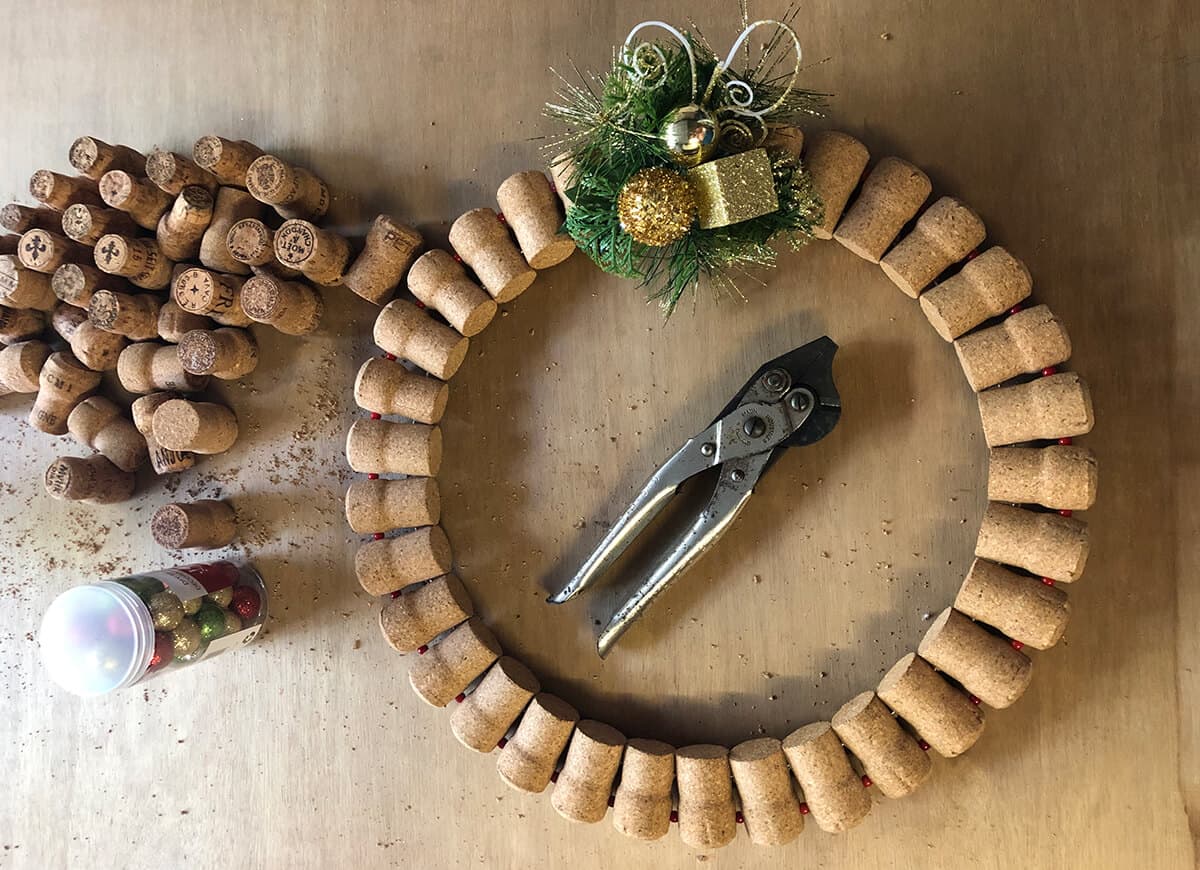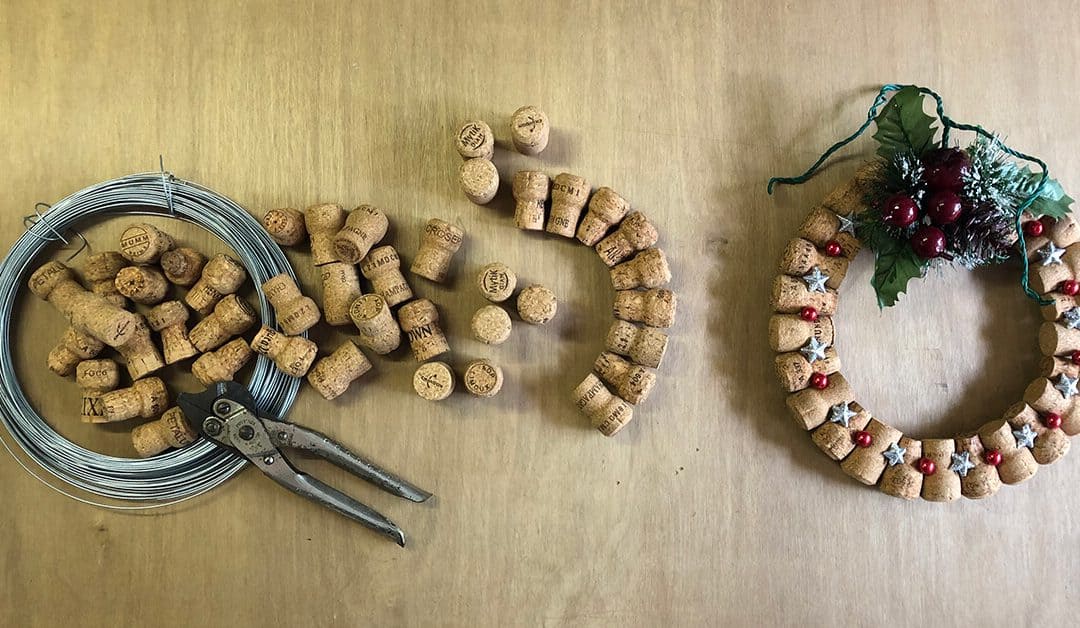Create Your Own Champagne Cork Christmas Wreath
We currently live in an age where recycling is becoming an accepted normality of our day to day life.
So, at this time of year when consumerism is at its peak, what better way to prove your environmental credentials than to repurpose some of those champagne corks collected from previous celebrations held by you or your party friends.
This very simple Christmas wreath requires minimal materials, tools or skills, and can be made in a few hours. The following guide will allow you to create your own cork wreath and is sure to become a talking point amongst your friends as they discuss whether you have a serious drinking problem!
Materials
- 24-30 champagne corks (or a combination of champagne and wine corks)
- Coil of 1mm diameter garden wire
- Plastic beads (optional)
- PVA glue
- Green twine or cord.
- Assorted Xmas decorations
Tools
- Pliers
- Drill with 2.5mm wood drill bit
Method

Sort the Corks
Corks come in all shapes and sizes, but only champagne corks develop the mushroom shape ideally suited to this application.
Whilst all “Champagne” corks are uniform in diameter before they are inserted into the bottle, they are also manufactured from a mix of materials, (http://www.jelinek.com/closures-stoppers/champagne-corks/) which results in a variety of mushroom shapes as they expand differently when released from the bottle.
Some corks tend to retain a narrower compressed neck (tapered corks) whilst others expand back to nearly their original shape (uniform corks). Both types of cork can be used, so the first step is to select corks of similar shapes into groups.
Since we want the corks to create a uniform circle, the diameter of the completed wreath will be determined by the extent of taper from the head of the cork to the bottom of the neck. Using a combination of tapered and uniform corks generally provides the best result.
Wine corks with a consistent diameter can also be used as an alternative to uniform champagne corks as fillers to increase the wreath circumference.
To ascertain the approximate diameter of the completed wreath, set out the corks on a flat bench and try different combinations to achieve the desired size.
If only uniform corks are available, additional spacers may be required to create a tapered effect to reduce the diameter. This is where coloured beads are useful.

Assembly
The corks are threaded onto two wire hoops to form the circular shape of the wreath and to hold the corks together.
Before this can be done, each cork needs to be predrilled, one hole through the head of the cork, the other through the neck.
Cut two lengths of wire, one about 1000mm long (outer ring), the other about 900mm(inner ring). These could be shorter for smaller diameter wreaths, but its easier to trim a bit of excess wire than it is to replace both lengths if they were cut too short.
Thread both the inner and outer wire through the first cork and create a 90-degree bend about 50mm from the ends to act as a stop for the corks. Then proceed to thread the remaining corks (and bead spacers if used) onto both wires, occasionally pulling the wires tight so that corks are squeezed together tightly, and the circle starts to take shape.
Once you have the first quadrant formed, you’ll have a good idea as to the finished size and the number of corks you’ll require. Any adjustments to cork combinations can be made at this point to increase or decrease the size to suit your preference.

When the circle is almost complete, pull the wires tight and flatten the corks onto the bench. This will determine how many additional corks are required to complete the circumference. Too few, and the inner hoop is likely to pucker when the outer wire is tightened. Too many and the spacing between the cork heads may increase more than necessary. The larger the diameter, the less critical this becomes, and you’ll probably find there is a tolerance of 1-2 corks that you can either use or discard.
To complete the cork ring, twist the ends of both wires together on each ring, using the pliers to tighten the inner ring first until all of the cork necks are tightly squeezed together. Repeat for the outer ring, ensuring you don’t overtighten resulting in the inner ring puckering out of shape.
Cut off the excess wire ends and then fold these twisted ends into the space between the corks.

This is the best location to thread the length of twine or cord used to hang the wreath into the gap between the inner and outer rings. The feature Christmas decoration can also be fixed at this location to conceal the twisted wire joins.
Any additional decorations can then be glued to the corks and bingo, you have a completed Christmas wreath.
Celebrate with a glass of champagne, and remember, keep the cork.

Now that you’ve covered your front door, how about creating your own contemporary Christmas Tree for inside?
https://leadesign.com.au/architect/diy-designer-christmas-tree/










